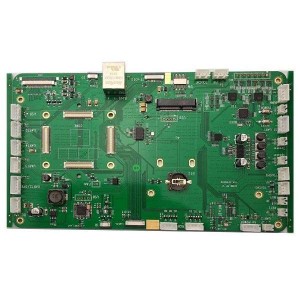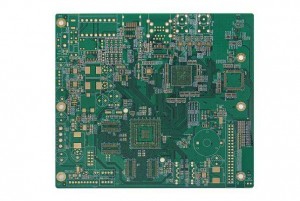The difference between PCB and PCB assembly
What is PCBA
PCBA is the abbreviation of printed circuit board assembly. It means that, the bare PCBs go through the whole process of SMT and DIP plug-in.
SMT and DIP are both ways to integrate parts on PCB board. The main difference is that SMT does not need to drill holes on PCB board. In DIP, you need to insert the PIN into the drilled hole.
What is SMT(Surface Mounted Technology)
Surface Mounted Technology mainly using the mount machine to mount some micro parts to the PCB board. The production process is: PCB board positioning, printing solder paste, mount machine mounted, reflow furnace and finished inspection. With the development of science and technology, SMT can also mount some large-size parts, such as: some large-size mechanism parts can be mounted on the motherboard.
SMT PCB assembly integration is sensitive to positioning and part size. In addition, the quality of solder paste and printing quality also play a key role.
DIP is “plug-in”, that is insert parts on PCB board. Because of the size of parts is large and it is not suitable for mounting or when the manufacturer cannot use SMT assembling technology, and the plug-in is used to integrate the parts. At present, there are two ways to realize the manual plug-in and robot plug-in in the industry. The main production processes is: sticking back glue (to prevent tin plating to the place that should not be plated), plug-in, inspection, wave soldering, plate brushing (to remove the stains left in the process of furnace passing) and finished inspection.
What is PCB
PCB means printed circuit board, which is also called printed wiring board. PCB is an important electronic component, also a support of electronic components and a carrier of electrical connection of electronic components. Because of it made by electronic printing, and called printed circuit board.
After using PCB for electronic equipment, due to the consistency of the same kind of PCB, the manual wiring error can be avoided, and the electronic components can be automatically inserted or pasted, automatically soldered, and automatically detected, so as to ensure the quality of electronic equipment, and improve labor productivity, reduce cost and facilitate maintenance.
PCB can be more and more widely used, because it has many unique advantages:
1. High density: For decades, PCB high density can develop with the improvement of IC integration and installation technology.
2. High reliability. Through a series of inspection, test and aging test, PCB can work reliably for a long time (generally 20 years).
3. Designability. For PCB performance requirements (electrical, physical, chemical, mechanical, etc.), PCB design can be realized through design 4. Standardization, standardization, etc., with short time and high efficiency.
5. Producibility. With modern management, standardization, scale (quantity), automation and other production can be carried out to ensure the consistency of product quality.
6. Testability. Established a relatively complete test method, test standards, various test equipment and instruments to detect and identify the PCB product qualification and service life.
7. Assemblability. PCB products are not only convenient for standardized assembly of various components, but also for automatic and large-scale mass production. At the same time, PCB and various component assembly parts can also be assembled to form larger parts, systems, and even the whole machine.
8. Maintainability. PCB products and various component assembly parts are designed and produced according to standards, these parts are also standardized. Therefore, once the system fails, it can be replaced quickly, conveniently and flexibly, and the system can be restored quickly. Of course, there are more examples. Such as making the system miniaturization, lightweight, high-speed signal transmission and so on.
What’s the difference between PCB and PCBA
1. PCB refers to circuit board, while PCBA refers to assembly of circuit board plug-in, SMT process.
2. Finished board and bare board
3. PCB is printed circuit board, which is made of epoxy glass resin. It is divided into 4, 6 and 8 layers according to the different signal layers. The most common is 4 and 6-layer 4. boards. Chip and other patch elements are attached to PCB.
5. PCBA can be understood as the finished circuit board that is after the process on the circuit board is completed and it can be called PCBA.
6. PCBA=Printed Circuit Board +Assembly
7. The bare PCBs go through the whole process of SMT and dip plug-in, it is called PCBA for short.
PCB is the abbreviation of printed circuit board. It is usually called printed circuit that is made of printed circuit, printed components or the conductive pattern formed by the combination of printed circuit board and printed circuit board. The conductive pattern that provides electrical connection between components on insulating substrate is called printed circuit. In this way, the printed circuit or the finished board of printed circuit is called printed circuit board, also called printed circuit board or printed circuit board.
There are no parts on the standard PCB, which is often called “printed wiring board (PWB)”
Do you want to find a reliable turnkey PCB assembly manufacturer?
PCBFuture’s mission is to provide industry with reliable advanced PCB fabrication and assembly services from prototype to production in a cost-effective manner. Our aim is to help each user become a well-rounded, multidisciplinary practitioner who can confidently bring innovative, cutting-edge engineering ideas to bear on any number of relevant tasks, problems, and technologies.
If you have any questions or enquires, feel free to contact sales@pcbfuture.com , we will reply to you ASAP.
Post time: Apr-01-2021






